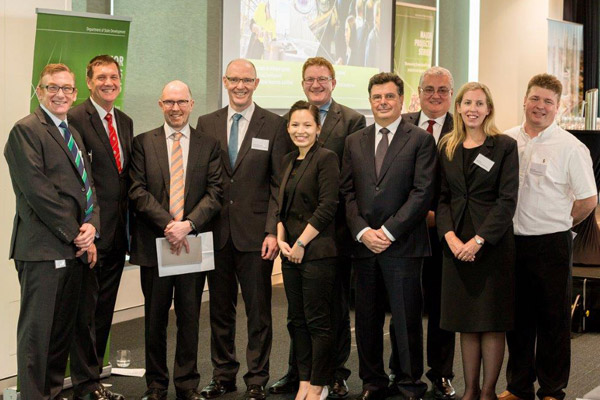Embed SRM as a Business Function in State Government
Prior to selecting Darzin as their Stakeholder Management Software, the Queensland Department of State Development (DSD) was using a Customer Relationship Management (CRM) system. Over time the underlying application and database technologies became obsolete and unsupported by the vendor and the CRM was decommissioned in 2013. Another CRM was implemented as an interim solution to be used by a number of divisions within DSD pending the deployment of a broader stakeholder management solution. This continued absence of a permanent solution was one of the key drivers for the development and implementation of an off-the-shelf Stakeholder Relations Management System (SRM).
Benefits of a Stakeholder Management Software
Darzin was implemented in 2014 as the permanent stakeholder management software with an aim to deliver the following benefits:
- Improved service levels to the Department’s stakeholders
- Improved, centralized management of information
- Increased work efficiency of staff
- Improved accuracy of all information collected, maintained, and provided by staff
- Improved timeliness and accuracy of responses to inquiries
- Improved Solution audit and control capabilities
- Improved management and ad hoc reporting
- Improved and partially integrated records management functionality
- A secure environment for management and storage of stakeholder data.
SRM Implementation Process
Implementation of Darzin SRM involved two business divisions with offices across Queensland (up to 250 users), and was carried out in two phases.
- Phase 1: Undertook configuration of Darzin based on DSD business needs, provided training, training materials, and administrator documentation, developed test plan and provided a test environment for DSD to test the configuration, and finalised the master settings.
- Phase 2: Established DSD final configurations and migrated data into a production environment and provided ongoing support (including ad-hoc training, data services and configuration support).
In 2016 DSD conducted a review of Darzin against the business requirements and this resulted in the expansion of Darzin to include two additional business divisions. This brought the total number of Darzin users in DSD to nearly 400 users. The stakeholder relationship management system was efficiently implemented in state government.
Success Factors
The implementation of Darzin was a success due to the following factors:
- Our approach to the Darzin implementation process. We recognised that to successfully implement the system, key users must be involved in the process. Representatives from all business divisions and offices worked together to identify business needs, agree on common goals and sign off on the master settings. The implementation process followed change management practice, participating business divisions and offices were brought along the journey. They owned the process and the participation rate was very high throughout the project.
- Even though each business division and each regional office had their own business requirements, DSD as a whole recognised the need to streamline the engagement process to enable sharing of stakeholder knowledge and improve consistency in the engagement practice across the organisation. In addition, Darzin enabled the Department to share the master settings while allowing for each office/ project to have the specific categories that are visible for themselves only.
- The strong support of the project sponsor and key users.
- The ability of the project management team (from both Darzin and client sides) in delivering the project on time and within budget.


2016 Major Projects Series participants
DSD is continuing the expansion of Darzin with an aim to have Darzin as the single stakeholder relationship management system across the entire state government organisation in the coming years.


